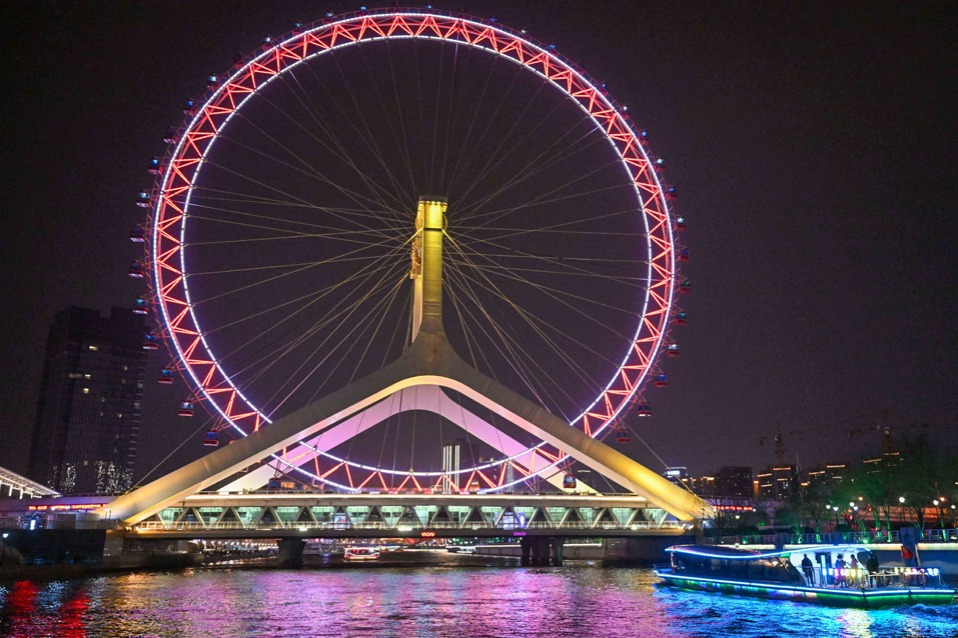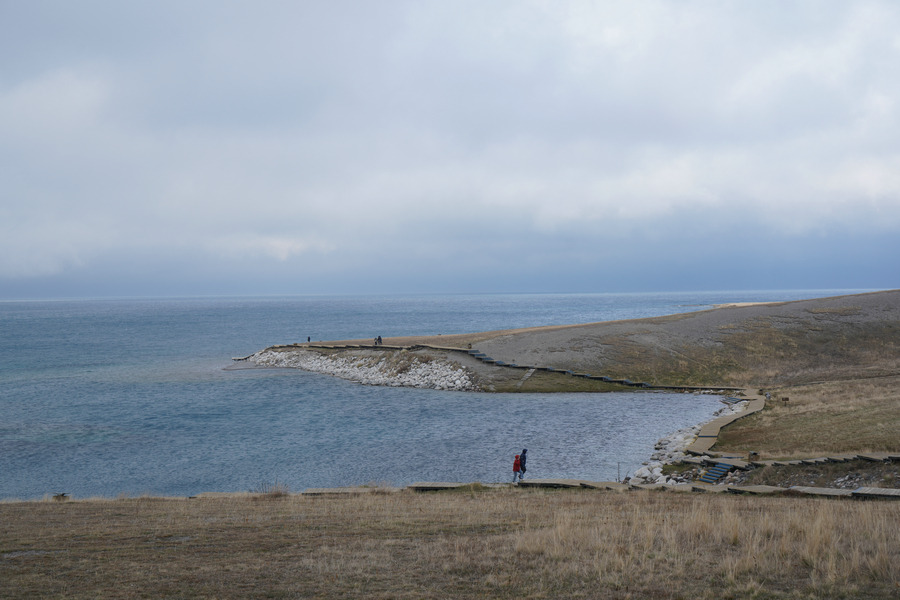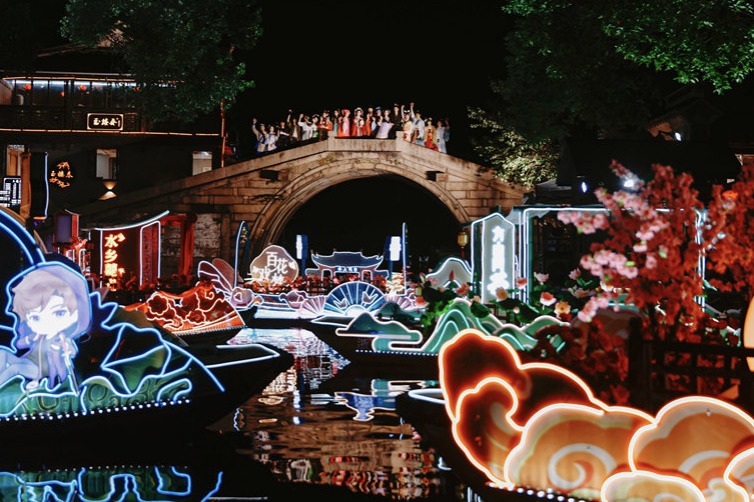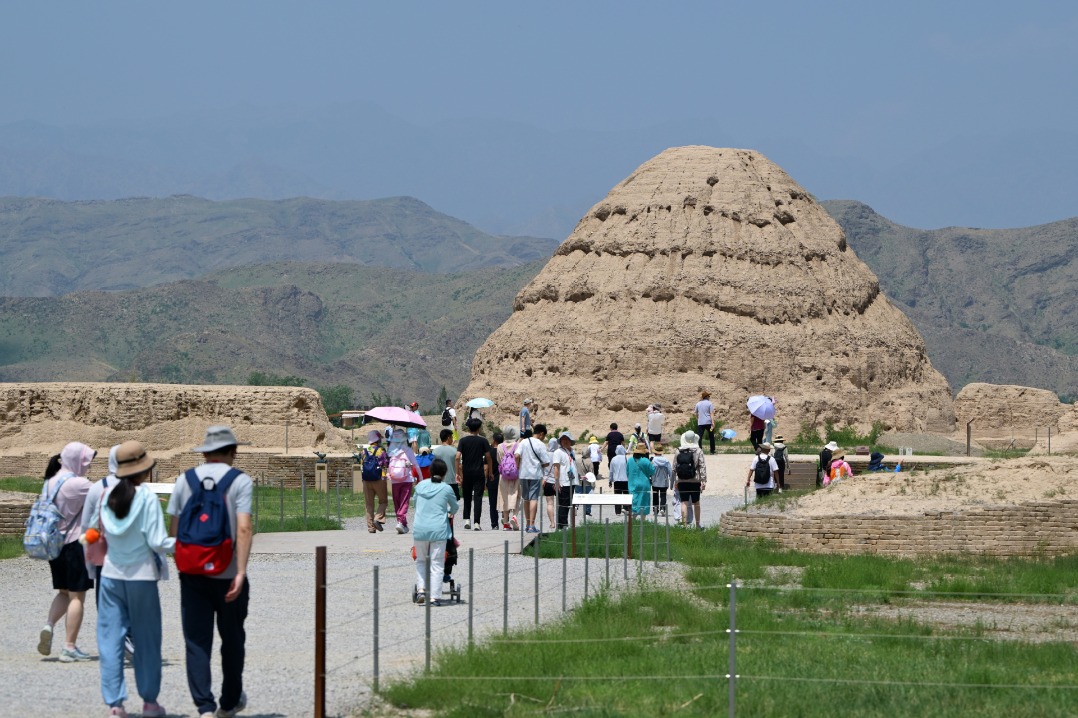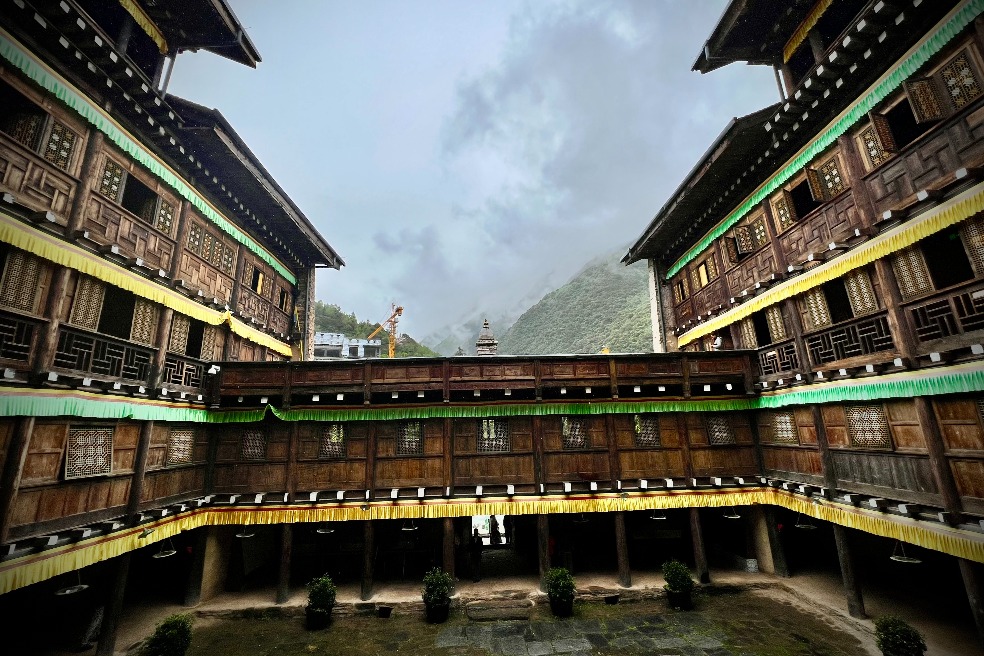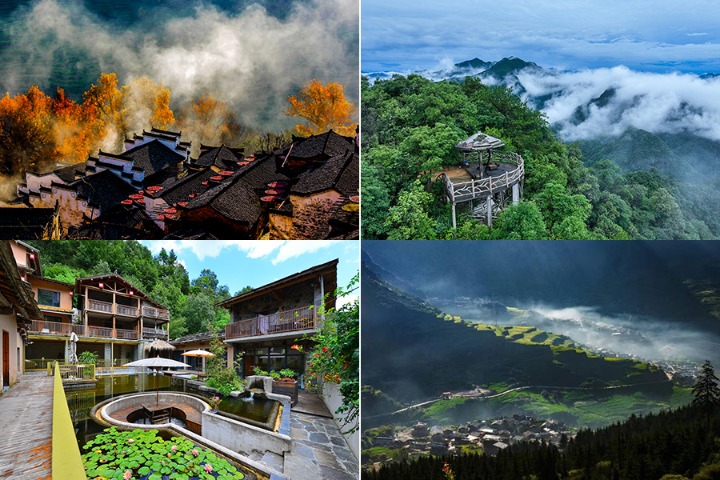A manor of memory, a manner of power

Zhuokeji was once home to Barkam's ruling chieftains and still commands global understanding of Gyalrong culture's evolution, Erik Nilsson reports.
For centuries, Zhuokeji Tusi Manor commanded lands in Barkam. Today, it reigns over a tract of global imagination.
The former residence of the Gyalrong Tibetan chieftains, built in 1266 and last renovated in 1938, in Sichuan province's Aba prefecture, houses true history and inspires historical fiction.
Within these walls, local luminary Alai discovered the inspiration for the setting of his seminal 1998 novel, Red Poppies — which won China's top literary honor, the Mao Dun Prize — and eponymous screen and stage adaptations, including a TV series filmed on-site. These have spread Zhuokeji's legacy and inspired descriptions translated into a dozen tongues relished by people around the globe. As such, Zhuokeji has become a place of pilgrimage for a select literary fan base.
Pulitzer Prize-winning writer Harrison Salisbury described this manor as a "pearl on the snow-covered plateau".
It bejewels the crown of a rocky summit overlooking the lands its masters once controlled.
The manor's very name, Zhuokeji, translates as "supremacy" — a fitting title for a structure that encapsulates the enduring yet evolving story of Gyalrong culture. For centuries, it and manors like it have defined the region's skylines and social landscapes.
These paramount buildings served as the foundations for the architecture of the tusi chieftain system, brick-and-board hearts that pumped power through the political, economic and military veins of their domains.
These feudal rulers governed their localities absolutely, yet paid taxes and tributes to the distant central government. The fact that their positions were hereditary is the crux of Red Poppies, which is narrated from the perspective of a chieftain's "idiot" son amid the upheavals of the early 20th century.
Zhuokeji played a pivotal role in national destiny as a significant stopover for the Red Army during the Long March (1934-36). The Communist Party of China's leaders, including Mao Zedong, Zhou Enlai and Zhu De, stayed there and held a critical conference to literally and metaphorically chart the course for the Party and country. Their quarters and meeting venue are still largely furnished as they were during their stay.
The 1935 Zhuokeji Conference marked a seismic shift toward the end of the feudalism that had dictated local life, and many of Aba's residents soon joined the Red Army as it continued onward toward Yan'an, Shaanxi province.
Generally speaking, Zhuokeji's physical structure testifies to the strict social configuration it once enforced.
Servants slept, ate and did dirty work on the ground floor, while chieftains, monks and nobility pursued lofty spiritual purity on the fifth floor.
Visitors can explore this architectural testimony to past societal hierarchies while discovering the culturally unique purposes of each of the compound's 63 rooms.
Barley liquor, yak-leather and medicinal herbs were processed and stored on the lowest level. A whole room was dedicated to warehousing tea, since Barkam was a major — although not central — node of the Tea Horse Road trade network. Specialized servants were tasked solely with spinning and weaving the soft, warm and durable pulu wool beloved by the region's nobility.
Items like robes, crossbows and sedans displayed on this floor show the ways nobility dressed, hunted and traveled.

















